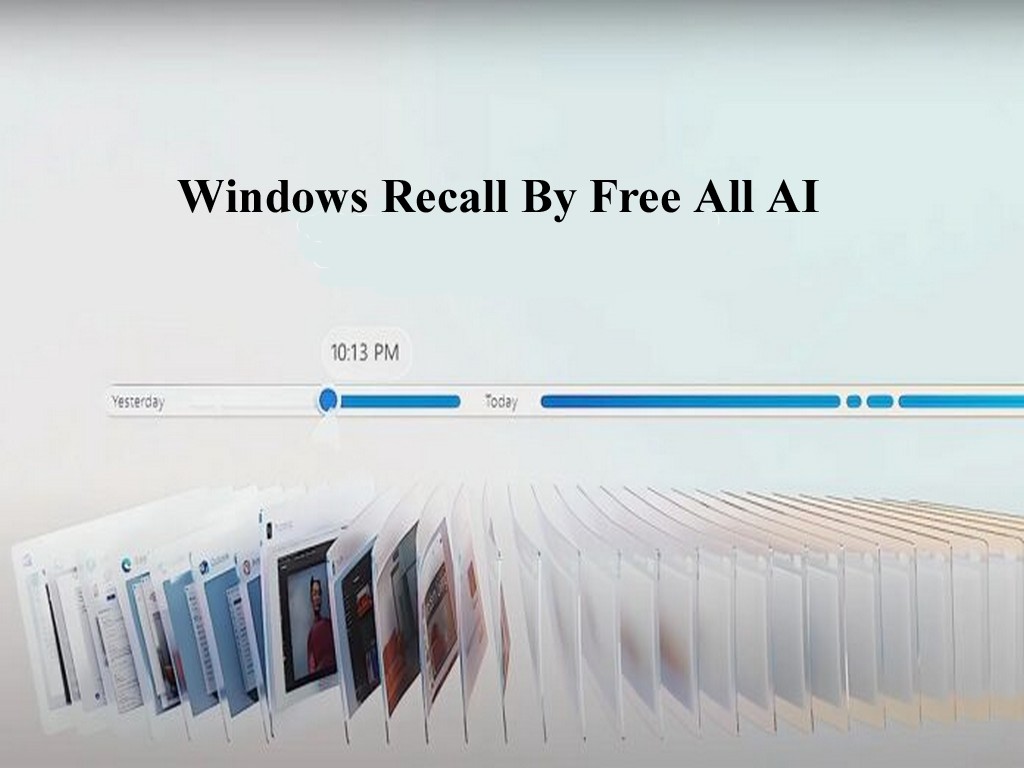In Windows 11, Microsoft has added a new function named Recall AI. The purpose of this function is to log and examine user interactions with the computer. What you should know about it is as follows:
- Continuous Monitoring: When a person uses a Windows 11 PC, Recall AI will keep track of everything they do.
- Privacy Issues: Because some users might find it strange that their every motion is being recorded and examined by the operating system, privacy issues have been brought up by this.
- Purpose: Microsoft states that Recall AI’s goal is to enhance user experience by offering tailored advice and support based on recorded data.
- User Control: This function must be controlled by users. Microsoft ought to give users easy ways to switch Recall AI on or off based on their preferences.
- Transparency: To resolve any possible privacy issues and preserve user confidence, Microsoft needs to be open and honest about the data it collects and uses.
Users need to be aware of the developments happening with this feature to understand how Recall AI will affect their Windows 11 experience.
What is the New Recall AI Feature on Windows 11?
The goal of Windows 11’s new Recall AI function is to increase productivity by simplifying the search and organization of files, emails, and documents. It seeks to make finding and retrieving crucial information across several platforms and apps easier. It is driven by Microsoft’s AI technology.
Important Recall AI Features for Windows 11
- Combined Search: Users can look for files, emails, and documents all from one place using Recall AI’s unified search experience. Finding what you need fast doesn’t need opening many programs or files.
- Natural English Processing: To comprehend questions in common English, this feature makes use of natural language processing. This makes the search process more user-friendly by allowing users to utilize everyday words and phrases.
- Cross-App Integration: Microsoft 365, Outlook, OneDrive, and other apps are among the ones where Recall AI is integrated. This connection makes sure that users, irrespective of the application in which their material is kept, can easily search for and retrieve it.
- Contextual ideas: Drawing from your past searches and interactions, the AI feature also offers contextual ideas. When you type your question, this can help speed up the search process by presenting you with relevant choices.
- Tailored Results: To provide tailored results, Recall AI takes into account your usage habits and preferences. It gains knowledge from your interactions over time to deliver more precise and customized search results.
How to Utilize Windows 11’s Recall AI
On Windows 11, click the search box or use the Windows key + S to start a search to utilize Recall AI. You may then start typing in your query, and Recall AI will start retrieving pertinent results from all of your papers, emails, and files.
- Benefits of Recall AI Time-Saving: By centralizing search and retrieval capabilities, recall AI reduces the amount of time users must spend manually looking for particular information across several apps.
- Enhanced Productivity: Recall AI’s tailored results and straightforward search features enable users to rapidly access the material they need to stay focused and productive.
- Enhanced Organization: This function facilitates better information management and organization, which streamlines digital workflows.
Recall AI in Windows 11 is a big step toward using AI to make knowledge retrieval easier and increase user productivity across a variety of Microsoft services and apps.

Recall AI: How It Works
Recall AI, also known as memory recall AI, is a technique that allows AI systems to recover and use data from their memories. Recall AI operates as follows, in summary:
- Data Collection: The AI system gathers and retains huge volumes of information from a variety of sources, including text, photos, and videos.
- Memory Storage: The acquired data is saved in an organized way in the AI’s memory, allowing for efficient recall and retrieval.
- Association and Indexing: The AI creates associations and indexes stored data, making it simpler to find and retrieve particular information when needed.
- Pattern Recognition: The AI is capable of identifying patterns within recorded material using sophisticated algorithms, resulting in more accurate recall.
- Retrieval Process: The AI uses its recall powers to pull pertinent data out of memory when it receives a task or question.
- Understanding Natural Language: Remember Natural language processing skills are frequently included in AI, enabling it to comprehend and react to questions in human language.
- Contextual Understanding: By utilizing its memory skills, the AI takes into account the query’s context to deliver more precise and pertinent answers.
- Continuous Learning: Some artificial intelligence systems for recall are made to pick up new knowledge continually and store it in their memory, which improves the system’s recall power over time.
All things considered, recall AI makes use of sophisticated indexing, retrieval, and memory storage techniques to efficiently retrieve and apply stored data in response to user requests or tasks.
Windows 11 Data Security Measures
A number of data security features are included in Windows 11 to improve user privacy and safeguard private data. Among the crucial security elements are:
- Secure Boot:Windows 11 has a feature called Secure Boot that ensures malware or illegal software hasn’t altered the firmware or operating system when booting up.
- Virtualization-Based Security (VBS): In Windows 11, VBS creates and isolates a secure memory area from the main operating system by utilizing hardware virtualization characteristics. This lessens the chance that malicious software or unapproved apps may obtain private data.
- Windows Hello: This biometric authentication tool adds extra protection to regular passwords by enabling users to log in to their devices using face recognition, fingerprint recognition, or PIN.
- Device Encryption: BitLocker, a feature of Windows 11, offers complete disk encryption to safeguard data from unwanted access if the device is misplaced or stolen.
- Windows Defender Antivirus: Windows Defender, which helps defend against malware, viruses, and other threats, is an integrated antivirus program in Windows 11.
- Microsoft Defender SmartScreen: By doing reputation checks on files and URLs, this feature guards users against downloading harmful software and visiting phishing websites.
- App Permissions: Windows 11 gives users more transparency and privacy control by letting them decide which applications may access their private information, including location, camera, microphone, and more.
- Security features for Microsoft Accounts: Windows 11 works with Microsoft accounts to provide extra security features including two-factor authentication to help stop unwanted access to user account .
- In summary : Windows 11 attempts to offer a more secure computing environment with these and other security improvements, enabling users to efficiently safeguard their data and privacy.


